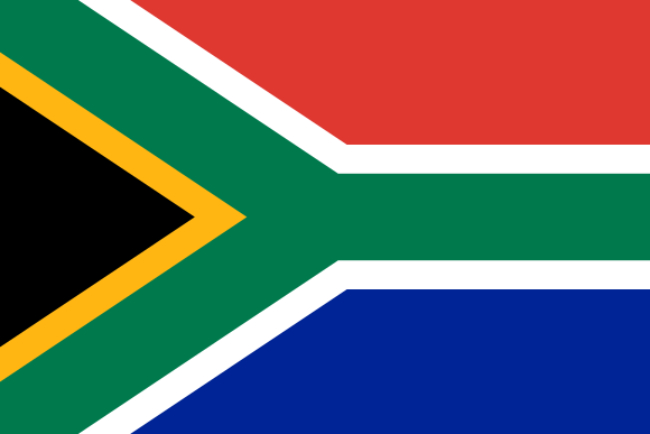South Africa is the southernmost African country is bordered by Botswana, Mozambique,
Namibia, Swaziland, and Zimbabwe and it surrounds the small Kingdom of Lesotho.
The country covers an area of 1,221,000 km², compared it is larger than four times the size of Italy, or slightly less than twice the size of the U.S. state of Texas.
South Africa has a population of 55.9 million people (official estimate 2016), the country’s
administrative capital is Pretoria; legislative capital is Cape Town and the judicial capital
is Bloemfontein (Mangaung), largest city is Johannesburg. SA has 11 official languages: Afrikaans, English, Ndebele, Northern Sotho, Sotho, Swazi, Tswana, Tsonga, Venda, Xhosa, and Zulu. Most spoken first languages are Zulu (isiZulu – 23%), Xhosa (isiXhosa – 16.0%), and Afrikaans (13.4%).
Background at South Africa
Often called ‘the rainbow nation‘, South Africa is one of the most ethnically diverse countries in Africa. It was inhabited by pastoral Khoekhoe (Khoi), the hunter-gatherer San, the Xhosa, and the Zulu nations and various other indigenous tribes, when Dutch settlers arrived in middle of the 17th century, much to the disadvantage of the Khoekhoe along the southern and western coastal strips.
What followed was an aggressive colonial expansion for centuries mainly of settlers of Dutch, German and French Huguenot origin. In 1795 the British took over the Cape from the Dutch, seven years later the colony was returned to the Dutch government, only to come under British rule again in 1806, this circumstance and the rise to power of the Zulu king Shaka, forcing many of the Dutch settlers (the Boers) to trek north and east to found their own republics.
The discovery of diamonds (1867) and gold (1886) spurred wealth and immigration and
intensified the subjugation of the native inhabitants until the end of the 20th century.
The 1990s brought an end to apartheid with South Africa’s transition to democracy and with Nelson Mandela’s inauguration as SA’s first democratically elected President 1994.
Business & Economy in South Africa
South Africa is a middle-income country with a rich supply of natural resources, with welldeveloped financial, legal, communications, energy and transport sectors. But unemployment, poverty and inequality – among the highest in the world – are still a challenge.
Geography of South Africa
Location: Southern Africa, at the southern tip of the African continent.
Area: 1.2 million km² (470,462 sq. mi).
Terrain: plateau, savanna, desert, mountains, coastal plains.
Climate: moderate, mostly semiarid; subtropical along east coast; similar to southern California.
People of South Africa
Nationality: South African(s).
Population: (2016) 55.9 million; black 78%; white 10%; colored 9%; Asian (Indian) 2.5%; other.
Languages: (11 official languages) Sesotho sa Leboa 9.2%, Sesotho, Setswana, siSwati (Swazi), Tshivenda, Xitsonga, Afrikaans 14,4%, English 8.6%, isiNdebele, isiXhosa 17.9%, isiZulu 22.9%.
Religions: Predominantly Christian; traditional African believes, Hindu, Muslim, Jewish.
Natural Resources of South Africa
South Africa is rich of natural resources: Gold, chromium, antimony, coal, iron ore, manganese, nickel, phosphates, tin, uranium, gem diamonds, platinum, copper, vanadium, salt, natural gas.
Agricultural Products of South Africa
Corn, wheat, sugarcane, fruits, vegetables; beef, poultry, mutton, wool, dairy products.
Industries in South Africa
Mining (world’s largest producer of platinum, gold, chromium), automobile assembly, metalworking, machinery, textile, iron and steel, chemicals, fertilizer, foodstuffs.
Exports – Commodities in South Africa
Gold, diamonds, platinum, other metals and minerals, machinery and equipment.
Exports Partners of South Africa
China 11.3%, USA 7.3%, Germany 6%, Namibia 5.2%, Botswana 5.2%, Japan 4.7%, UK 4.3%, India 4.2% (2015)
Imports – Commodities in South Africa
Machinery and equipment, chemicals, petroleum products, scientific instruments, foodstuffs.
Imports – Partners of South Africa
China 17.6%, Germany 11.2%, USA 6.7%, Nigeria 5%, India 4.7%, Saudi Arabia 4.1% (2015)
Currency of South Africa
South African Rand (ZAR)
CENTER FOR AFRICAN STUDIES
Center for Africa Studies (AFRAM) which located in Ankara, is an organization facilitating under the administration of African Affairs Council (AFAC). It makes various researches about Africa to enhance economic and cultural bounds between Africa and Turkey. AFRAM’s publishings has been shared with different institutions as they require to obtain.
AFRICA OBSERVATORY
Africa Observatory is one the publishing of AFRAM and it has been published each two weeks. It has been delivered to different institutions via e-mail.






